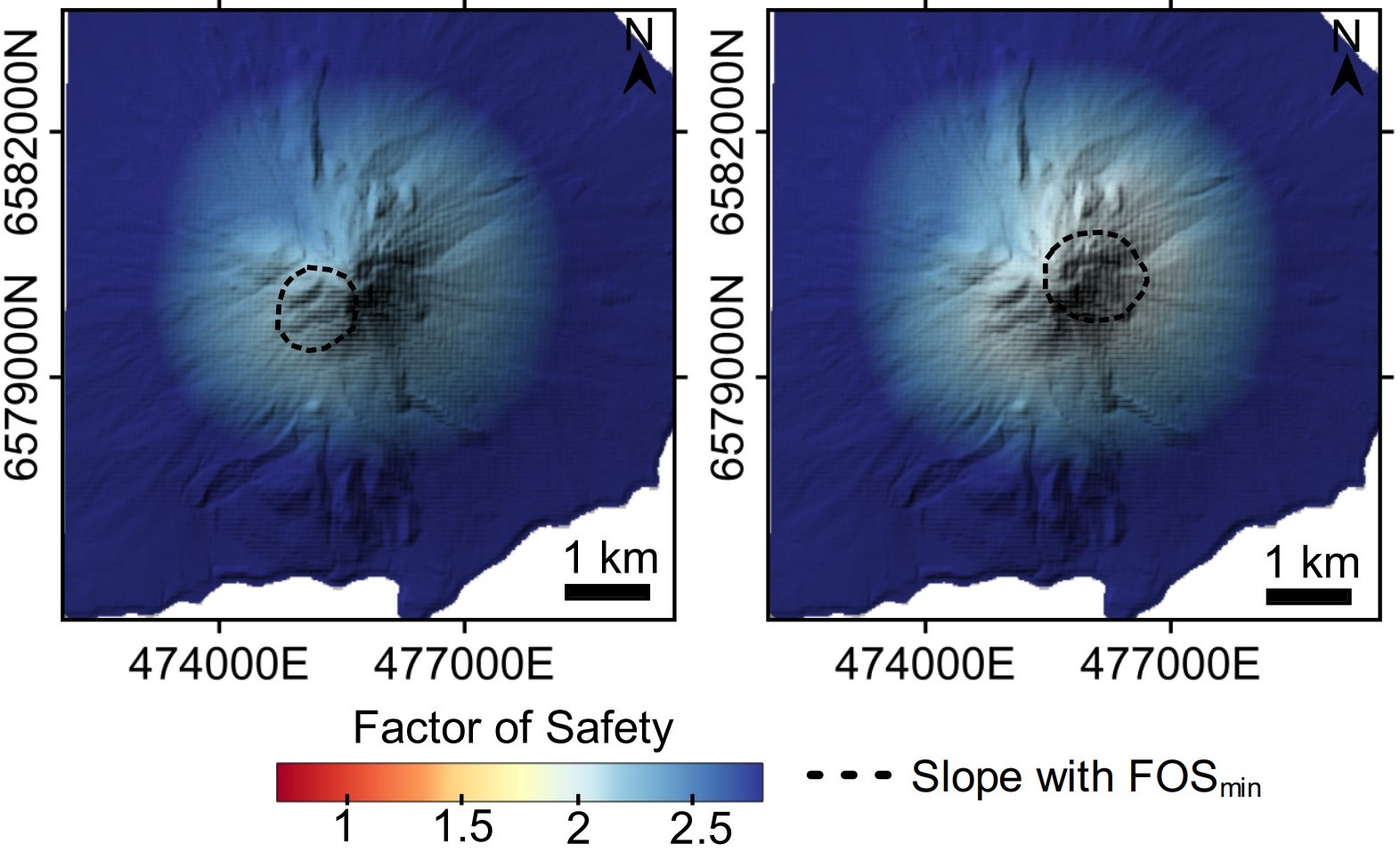
Scenario-based volcano slope stability hazard analysis: Case study of Augustine volcano, Alaska
Information
Journal of Geophysical Research - Earth Surface | 2024
Authors:
Shreya Kanakiya,
DOI: https://doi.org/10.1029/2024JF007862
Several active volcanoes worldwide have slope failures where large parts of their structure collapse, generating destructive mass flows called volcanic debris avalanches. These flows travel long distances and sometimes have cascading hazards like eruptions and tsunamis. Subsequently, the volcano's structure rebuilds with new material ejected during eruptions. Augustine Volcano in Alaska has a history of these cycles of slope failures and reconstruction. This study aims to understand the volcano's current slope stability hazard considering factors such as inherent topographic structure and several conditions that can occur in active volcanic environments (e.g., changes in the volcano's structure and strength of rocks, earthquakes, and pore pressure conditions). In all scenarios assessed in this study, the volcano's slopes remain stable, with the relatively least stable slope occurring in the southwestern parts of the volcano. Overall, the steep landscape and structure underneath the volcano are vital in determining where relatively less stable areas exist. Factors such as weakening of the rocks, pressure from water in cracks and voids in the rock, and ground shaking due to earthquakes can make such slopes susceptible to sliding.
Highlights
-
Augustine Volcano's edifice is stable under the slope-stability scenarios assessed.
-
Topography and subsurface heterogeneity are key underlying factors controlling where collapse-prone source areas occur.
-
Pore fluid pressurization and earthquake loading reduce the relative stability of the volcano's edifice.
Frequently Asked Questions
- Where can I find the data from this study?
-
All data from this study are available in the online open-access repository - figshare. Citation: Kanakiya, S. (2024). Scenario-based volcano slope stability hazard analysis: Case study of Augustine Volcano [Dataset]. Alaska. https://doi.org/10.6084/m9.figshare.25752564